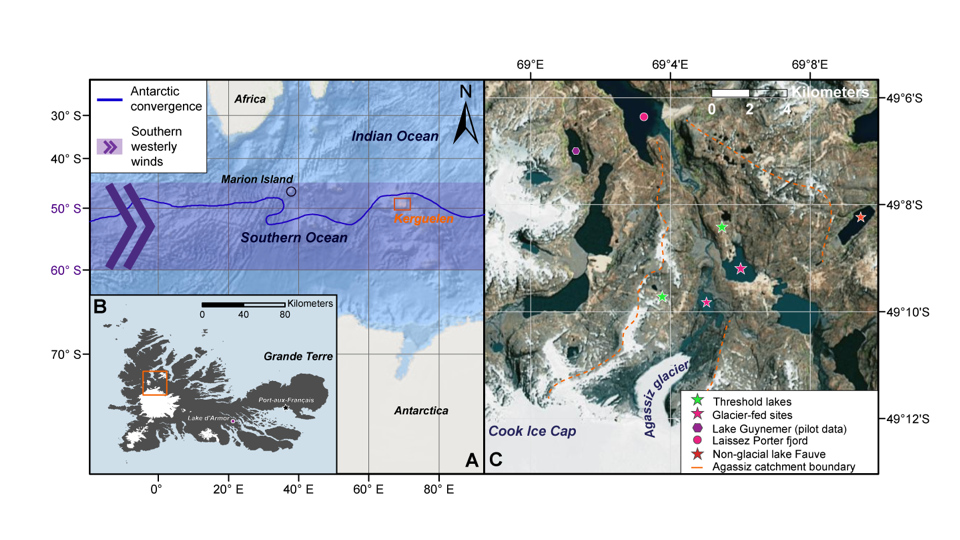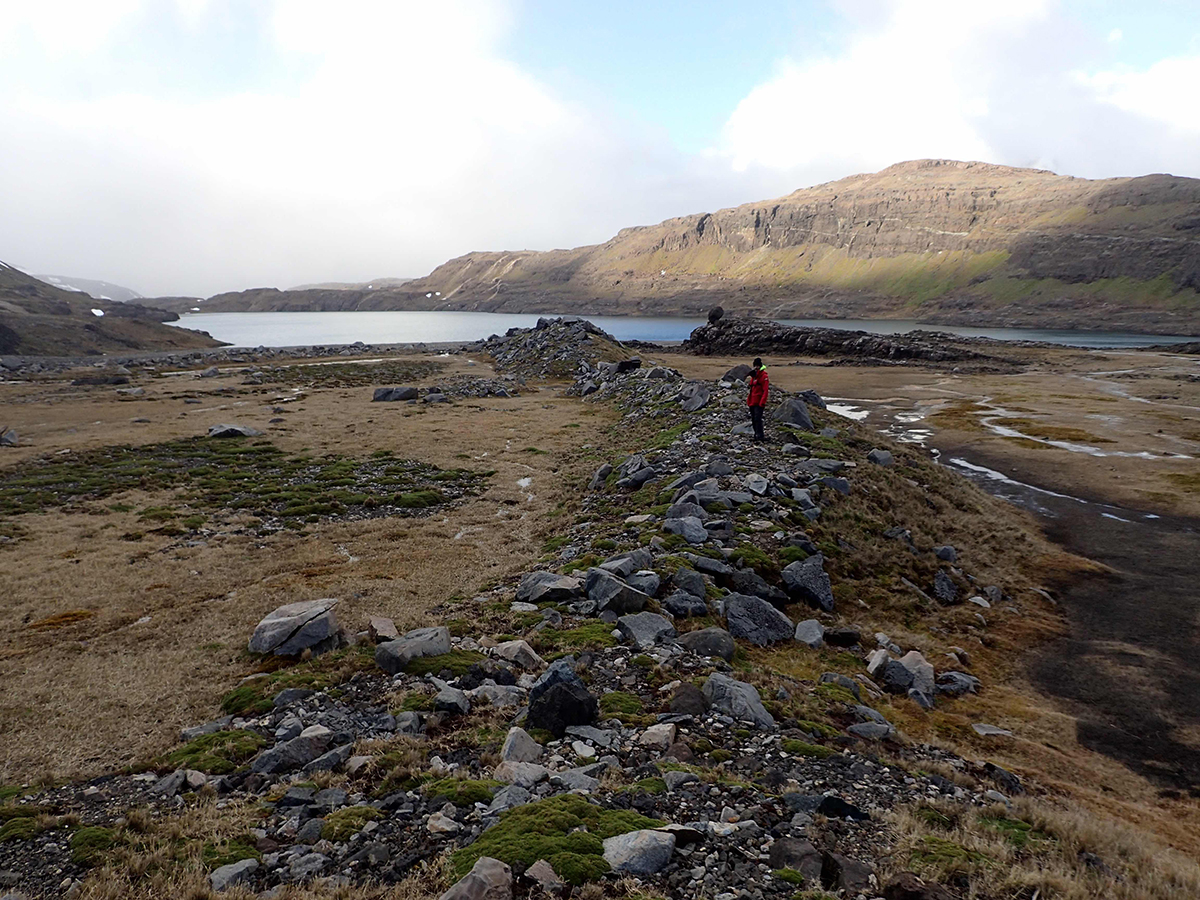In the Southern Hemisphere it is summer, but what awaits the scientists is no summer camp. On the Kerguelen Islands, the December temperature normally stays between three and ten degrees. A steady fresh breeze is normal, and hurricane force winds are not uncommon.
"We have been here before - as whalers about a hundred years ago - now we are here again as researchers", writes Jostein Bakke in an e-mail from the Southern Ocean.
Bakke is a professor at the Bjerknes Centre and the Department of Earth Science at the University of Bergen. Together with colleagues from Norway, France, the United States and Switzerland, he is on the Kerguelen Islands to explore the westerly winds – or traces of them.
The wind influences the climate and the glaciers. If they can find out how the glaciers have varied through thousands of years, they may also be able to trace the winds of ancient times.
Both the Northern and the Southern Hemisphere have belts of westerly winds between 30 and 60 degrees, but the winds are stronger in the south. In the Northern Hemisphere, friction from the land masses slow down the air flow. In the Southern Hemisphere, the air can flow more freely around the globe. The few existing obstacles include some small islands, like Kerguelen.

Scarcely populated, little information
In 1908, Norwegian whalers set up a base in Port Jeanne d'Arc on the southern side of the French Kerguelen Islands. A decade later the Norwegian adventure was over. Today there is only a minimum of activity on the islands in the Southern Ocean – people can be found only in a few places. Without people, there are no airports. To get to Kerguelen, the French research vessel "Marion Dufresne" has had to pass some of the roughest ocean regions in the world.
Palaeo climatologists have data from the ocean and the ocean floor in Sub-Antarctic regions, but few data have been collected from land. More knowledge exists about subpolar regions in the Northern Hemisphere. Jostein Bakke and his colleagues will use the methods they have developed for the high north to get more information from the south.
In 2011 a field campaign gave them data from South Georgia, and this year they will work on the Kerguelen Islands. The aim is to reconstruct the climate back to the ice age. With such a record of the past, they hope to contribute to a clearer picture of the future.

Future climate in Sub-Antarctic regions is uncertain
Climate models fail to reproduce the rapid changes that have been observed in the climate in the region around Antarctica. This implies that the future climate in this part of the world is uncertain.
"Divergent model results indicate that the climate dynamics in the Southern Ocean, and especially how the interaction between the various climate drivers are connected, is not well understood", Jostein Bakke writes.
To improve the situation, the researchers will combine glacier models with proxies reflecting the climate of the past on Kerguelen. This can tell them more about how the climate shapes the glaciers.
Rocks tell about the weather
There is a long way from hard rocks to the light air that encircles the globe. Still, the scientists that are at Kerguelen now are geologists, not meteorologists. The ground bears the marks of the weather throughout the ages.
When glaciers disappear, the rocks under them – like everything else on Earth – are exposed to cosmic radiation. The radiation leads to changes in atoms in the upper parts of the rocks. By measuring the degree to which this has happened, the scientists can calculate how long the ground has been free from ice.
Sediments sampled from the floor of lakes can also indicate when glaciers have developed or disappeared, as well as the temperature at different times. All these variables can be linked to the westerlies.
The strength of the westerly wind belt can vary, and the belt can move southwards or northwards. The scientists' theory is that past variations in the westerlies have influenced the climate and the glaciers on the Kerguelen Islands. As a result, glacier reconstructions can be used as a measure of variations in the westerlies.
The strong westerlies do not only influence the climate on land. It also maintains the Antarctic circumpolar current, and it is important for the uptake of carbon in the Southern Ocean.

Windy camping
Until Christmas Eve, the scientists will sleep in tents, in a region where the cold, catabatic winds from the Cook Ice Cap can reach hurricane force.
"In such winds even the best tent will experience problems", writes Jostein Bakke.
Just in case, the scientists have brought tiny, wooden houses for additional shelter. Even those who travel to the other side of the globe for wind, can sometimes find there is too much of it.

